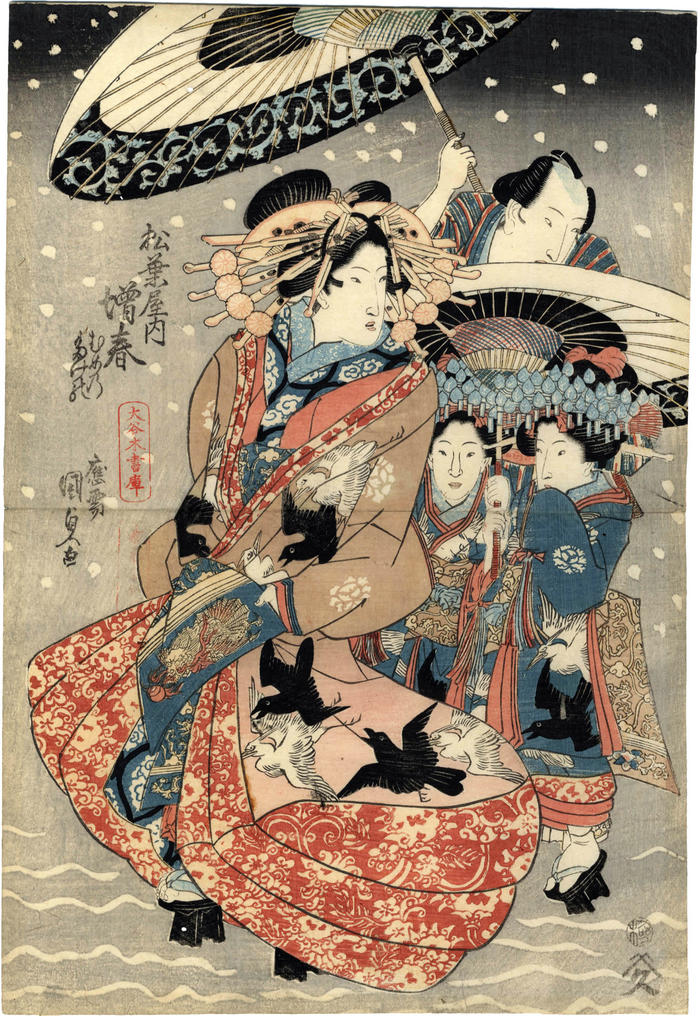Utagawa Kunisada (歌川国貞) / Toyokuni III (三代豊国) (artist 1786 – 01/12/1865)
The courtesan Masuharu (増春) of the Matsubaya House (松葉屋)
ca 1823
14.5 in x 10 in (Overall dimensions) Japanese woodblock print
Signed: ōju Kunisada ga
應需国貞画
Publisher: Yamamotoya Heikichi
(Marks 595 - seal 04-007)
Censor's seal: kiwame
Red seal: Ōyagi (大谷木) Shoko?
Natural History Museum of Romania
Harn Museum of Art, the University of Florida Another version of this print is illustrated online at the Ōta Memorial Museum of Art site promoting their exhibition 'Fashion in the Yoshiwara Pleasure Quarter' from November 2 to December 20, 2018. The text is in English and identifies this oiran as the “Courtesan Yoyoyama of the Matsuba-ya House with Her Attendants, Kakeo and Nishiki”. That is who is represented in their copy, but the name of the courtesan has been changed to Masuharu on the print in the Lyon Collection.
****
There are 130 examples of prints listed at the Museum of Fine Arts in Boston - some of them probably duplicates - showing courtesans from the Matsubaya. Other artists who represented women from this house are Harunobu, Bunchō, Kiyonaga, Koryūsai, Kuniyasu, Kuninaga, Hidemaro, Chōki, Eisen, Eizan, Shunchō, Shikimaro, Shigemasa, Tsukimaro, Masanobu, Utamaro, Eishi, Eishō, Eiri, Eisui, Shugenobu I, Toyokuni I, Kiyomine and Kunisada II.
****
Center panel of a possible triptych of courtesans and attendants on parade in the snow wearing matching kimono in a pattern of cranes and crows.

****
A question of age
When this print first entered the Lyon Collection it was thought to have been from ca. 1830. This might have been a date supplied by the seller or it might have been guessed at on stylistic terms. However, considering that there is a similar parade of elaborately dressed courtesans accompanied by adult male attendants who are protecting them from a rain storm. That triptych, also published by Yamamotoya Heikichi, is dated to ca. 1823. Therefore, it only makes sense that this print is also from that time period. (See the attached image of that triptych in the upper right.)
Yamamotoya Heikichi (山本屋平吉) (publisher)
beautiful woman picture (bijin-ga - 美人画) (genre)
